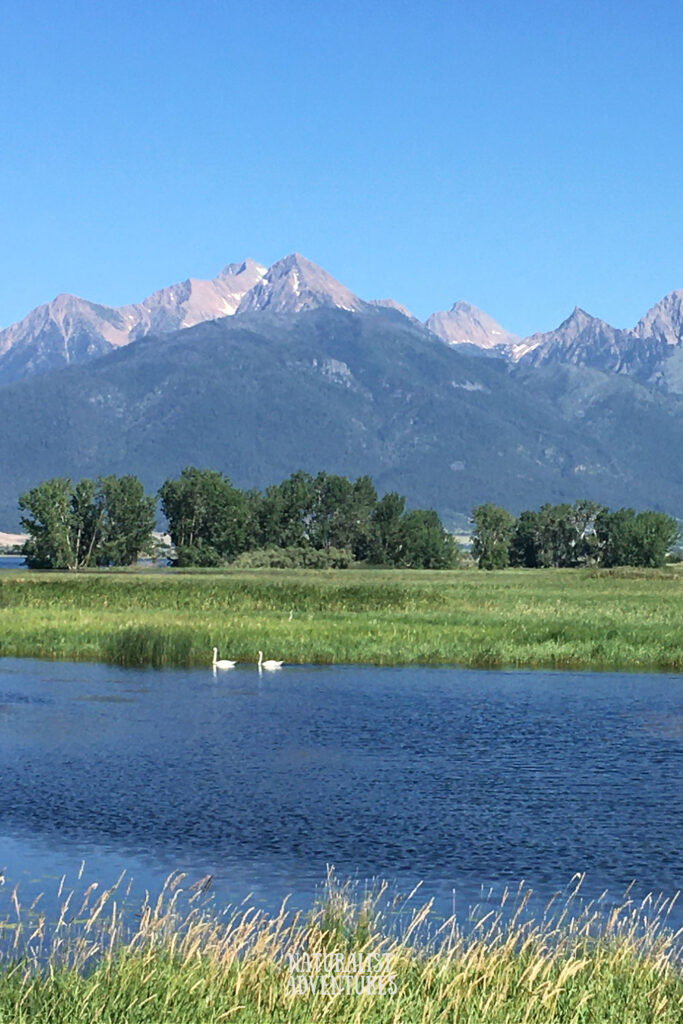Visiting Ninepipe National Wildlife Refuge
Ninepipe National Wildlife Refuge is a beautiful refuge located in Lake County on the Flathead Indian Reservation in western Montana. The mixture of wetlands and grasslands offers a wide variety of wildlife viewing and bird watching.
It is especially exciting to visit Ninepipe National Wildlife Refuge during spring and fall bird migration when thousands of bird species pass through on their migration routes. If you’re lucky, you may even get to see a grizzly bear foraging!
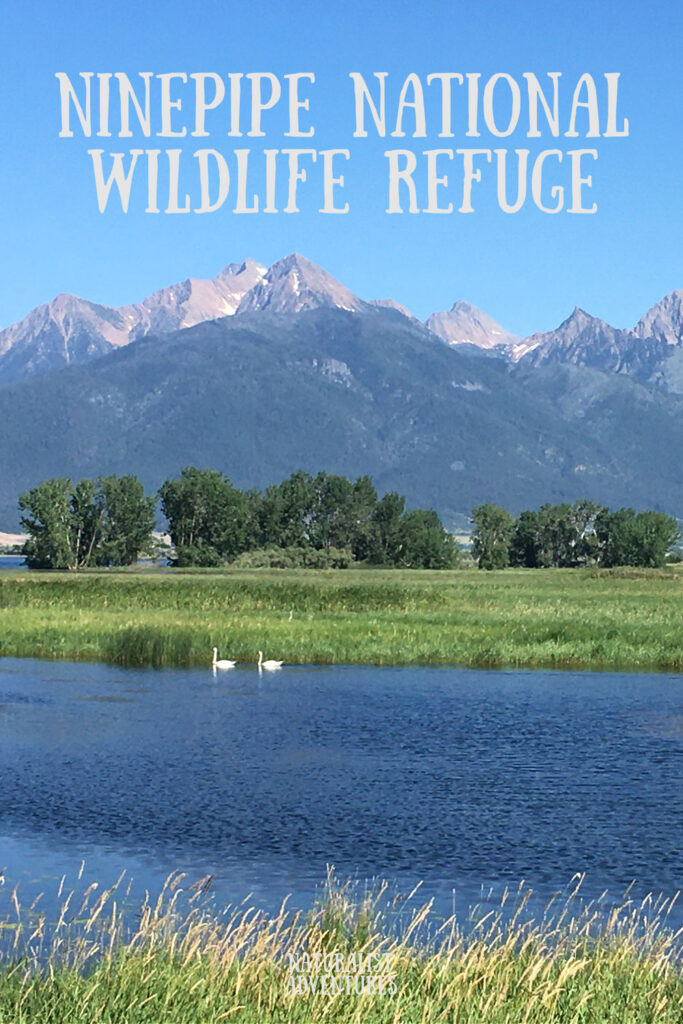
History of Ninepipe National Wildlife Refuge
Ninepipe National Wildlife Refuge was established in 1921. The refuge encompasses 4.027 acres of wetlands and grasslands abundant with wildlife and bird watching opportunities.
Ninepipe National Wildlife Refuge is located on the Flathead Indian Reservation, the Tribal Trust Lands of the Confederated Salish and Kootenai Tribes.
Because the Ninepipe National Wildlife Refuge is located on the Flathead Indian Refuge, the signs in the refuge have both English and traditional native language names of the locations.
Ninepipe National Wildlife Refuge contains over 800 glacial potholes as well as a 1,770 acre reservoir
Even though the Ninepipe Wildlife Refuge is located on a reservation, it is managed by the US Fish and Wildlife Service.
Where is Ninepipe National Wildlife Refuge located?
Ninepipe National Wildlife Refuge is located in Charlo, Montana. Charlo is located about five miles south of Ronan, in between the towns of St. Ignatius and Ronan in Lake County in western Montana.
The refuge is located on the Flathead Indian Reservation. This area is also known as the Mission Valley because of the majestic Mission Mountains that border the area to the east.
Ninepipe National Wildlife Refuge is easily accessed off of Highway 93. Portions of Ninepipe National Wildlife Refuge can been seen when driving on Highway 93 between St. Ignatius and Ronan.
State Road 212 borders Ninepipe National Wildlife Refuge to the north and offers several access points. State Road 212 is easily located by the flashing light intersection with Highway 93 south of Ronan.
Wildlife Viewing and Bird Watching at Ninepipe National Wildlife Refuge
There is a wide variety of wildlife species to be seen at Ninepipe Refuge which is one of the reasons we love to visit!
We’ve seen muskrat, coyotes, white-tailed deer, skunk, and even watched Northern Harriers swoop down and catch a field mouse or vole out of the grasslands!
Grizzly bears are known to wander the Ninepipe National Wildlife Refuge, especially when foraging in the fall. We’ve heard first hand accounts from people who saw Grizzly bears there and saw a picture of a young Grizzly bear on the northern edge of the reservoir.
The US Fish and Wildlife Service has more details about the species that may be seen at the Refuge throughout the seasons.
Bird watching at Ninepipe National Wildlife Refuge is very popular year round. I love to bird watch Ninepipe Refuge year round to observe the migratory birds passing through and the Great Blue Heron and Cormorants in their rookeries.
In the winter time, we’ve watched Bald Eagles dine on ducks congregating in the few open patches of water on the reservoir.
For the most up to date bird observations, check out the eBird hotspot for Ninepipe Wildlife Refuge.
Best locations for bird watching and wildlife viewing
Bordered on the east side by Highway 93 and State Road 212 on the north, there are numerous access points surrounding the refuge. During nesting season, there is an active Great Blue Heron and Double Crested Cormorant Rookery that we love to watch.
Here is a link to the US Fish and Wildlife Service map for Ninepipe National Wildlife Refuge that includes designated parking and access points.
Viewing Area on the East Side of the Reservoir
On the east side of Ninepipe Reservoir is an access point with parking area just off Highway 93. There is a paved walking Interpretive Nature Trail at this location that offers excellent bird watching opportunities. This trail is marked as being wheelchair accessible. This access point is across Highway 93 in the vicinity of Ninepipes lodge and Ninepipes Museum.
Ninepipe Road and Dam Access
State Road 212 borders Ninepipe National Wildlife Refuge on the north and there is a parking area with trailhead access along this road.
There is also an access point to turn onto Ninepipe Road and drive across the dam on the western edge of the Ninepipe Reservoir. The road over the dam is a popular location for fishing and bird watching.
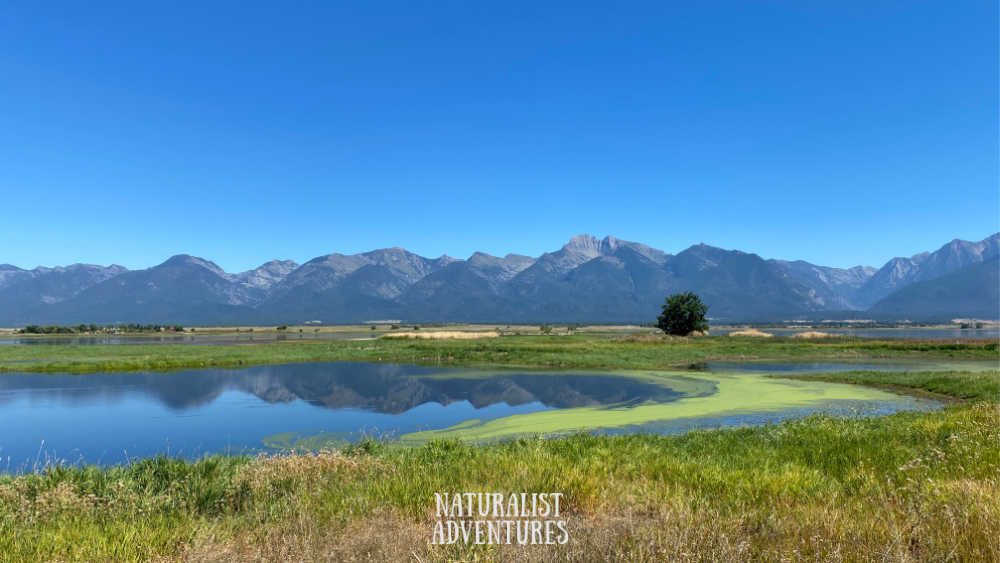
Ninepipe National Wildlife Refuge access road
There is a seasonal access road that follows the southern border of the Ninepipe Reservoir.
This access road is closed in the winter and open only in the summer months. This road is accessed from Ninepipe Road or Olsen Road.
We always enter this access road on the east side of the Reservoir so we have the Mission Mountains in front of us as a backdrop to the Refuge.
The eastern access is off of Ninepipe Road after driving over the dam and past the next parking area (Ninepipe Road Parking Area on the map) located near the Great Blue Heron and Cormorant Rookeries.
This road can be seen on the NInepipe National Wildlife Refuge map and is designated with a dashed line (there is no name for this road on the Ninepipe Refuge map).
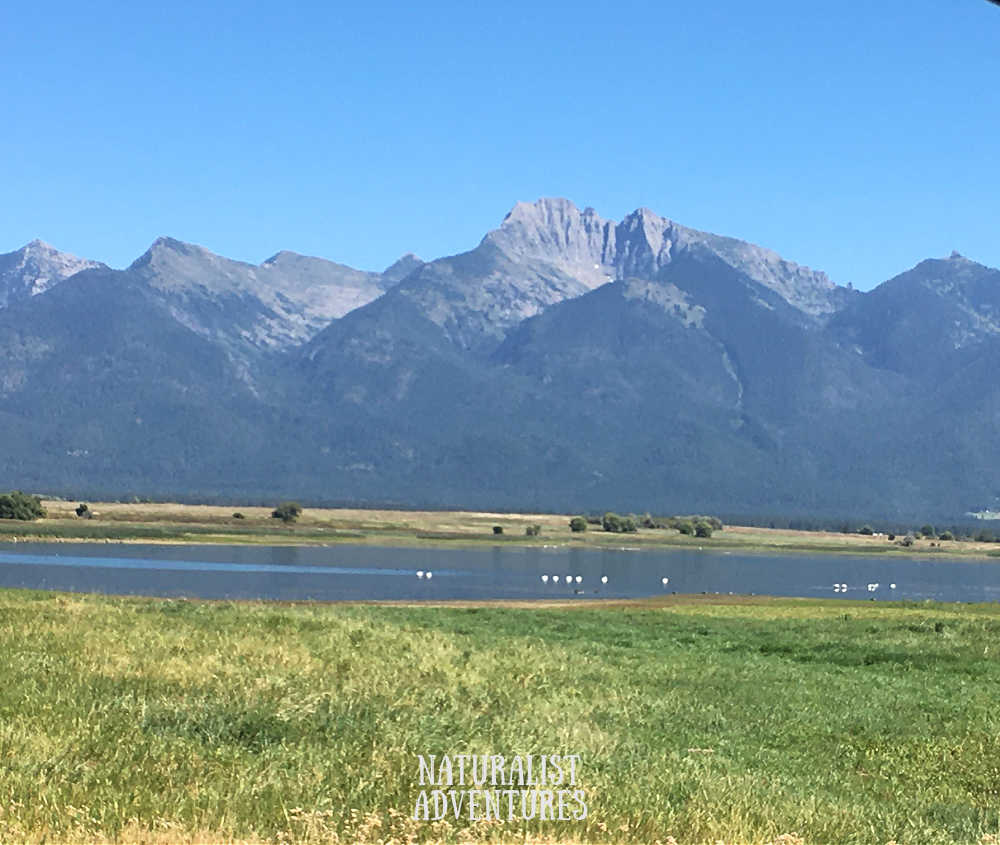
This access road is my favorite road to drive for bird watching and wildlife viewing at Ninepipe National Wildlife Refuge!
This narrow dirt road meanders through the wildlife refuge offering excellent wildlife viewing and birdwatching.
There are also great views of patches of blooming milkweed and turtles basking in the sunshine on submerged trees in the ponds.
Winter Bird Watching Route
Bird watching and wildlife viewing at NInepipe National Wildlife Refuge is a year round opportunity.
In the winter when some trails and road access are limited, there are still plenty of bird watching opportunities you can do from the warmth of your car.
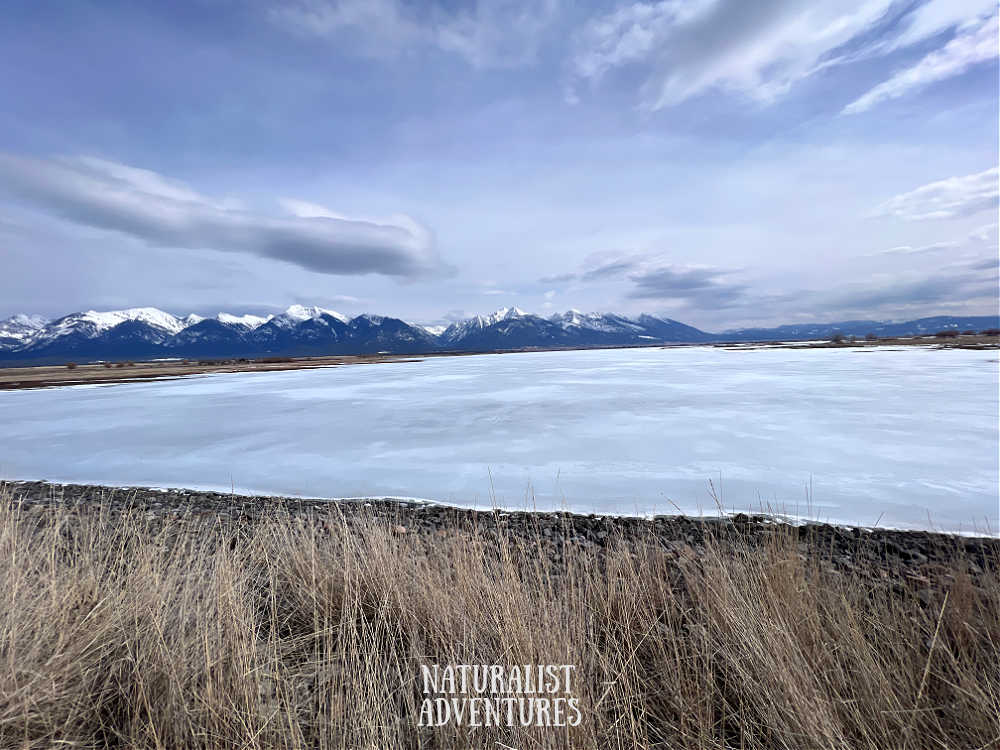
My favorite drive around Ninepipe National Wildlife Refuge in winter is driving north on Highway 93, turning east onto State Highway 212, then turning south to cross the dam onto Ninepipe Road.
Ninepipe Road continues past the federal Ninepipe National Wildlife Refuge and continues on through the Ninepipe Wildlife Management Area, various farm fields and other conservation lands.
Turning east onto Olsen Road provides more views of potholes, wetlands and grassland habitats. This road will eventually intersect back at Highway 93.
Rural Dirt Roads in the Area
There are many other wildlife management and conservation areas in the rural community surrounding Ninepipe National Wildlife Refuge. Driving many of the dirt roads in the area is bound to produce an abundance of wildlife and bird watching opportunities.
We especially love looking for pheasants, raptors and owls since they are abundant in the grasslands around Ninepipe National Wildlife Refuge.
Ninepipe Wildlife Management Area
In 1953 the Ninepipe Wildlife Management Area (WMA) was created to help conserve wetlands and grasslands surrounding the Ninepipe National Wildlife Refuge. The WMA consists of about 4,200 acres.
Unlike the Ninepipe National Wildlife Refuge that is federally managed, the Ninepipe Wildlife Management Area is managed by the State under Montana Fish, Wildlife and Parks.
The WMA extends to the east and west of Highway 93 and encompasses a vast area. Here is a link to the map of the Ninepipe Wildlife Management Area.
We drive through a portion of the WMA on Ninepipe Road after leaving the Ninepipe National Wildlife Refuge.
Ninepipe National Wildlife Refuge Hiking Restrictions
Ninepipe National Wildlife Refuge has specific hiking and access restrictions that change during the seasons so always consult the Refuge website for up to date access regulations.
If you are hiking in the Ninepipe National Wildlife Refuge, be aware that it is grizzly bear country so always be prepared by carrying Bear Spray!
Grizzly bears have been seen frequenting the area and we are aware of one specific area where a mama grizzly bear and her cub were known to hang out.
Ninepipes Museum of Early Montana
If you are in the area of Ninepipes National Wildlife Refuge, it is worth it to stop at the Ninepipes Museum of Early Montana.
This museum is located next to the Ninepipes Lodge along Highway 93 directly across from Ninepipe National Wildlife Refuge.
The Ninepipes Museum is an astounding collection of Native American and western history. Our family toured the museum on a rainy Saturday and it quickly became one of our favorite museums.
In addition to the indoor museum, there are various pieces of historical artifacts outside like the buffalo wagons that my kids really loved.
There’s also a picnic area and a short nature trail visitors can walk with exquisite views of the majestic Mission Mountain range.
